Problems with starting a car engine can be divided into two main groups depending on the degree of engine heating
The engine is cold
At least 6 hours have passed since the engine was turned off at an outside air temperature of +20 °C and at least 3 hours at -20 °C, the oil temperature in the engine crankcase coincides with the ambient temperature.
The methods for starting an engine with a fuel injection system are the same at any outside air temperature.
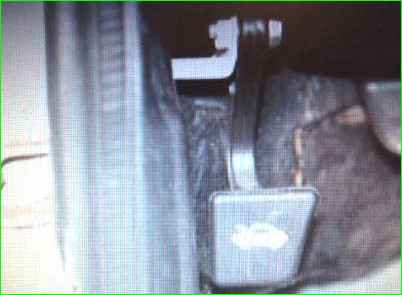
Open the hood by pulling the hood lock handle.
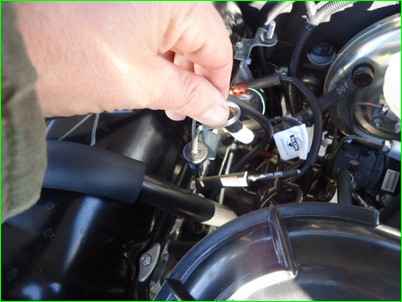
Use the dipstick to measure the oil level. It should be between the "MAX" and "MIN" marks.
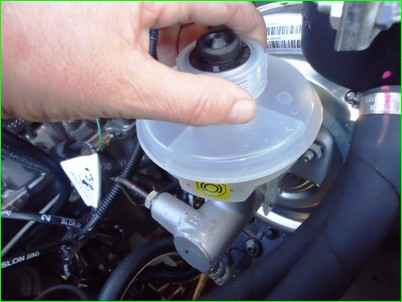
Check the brake fluid level
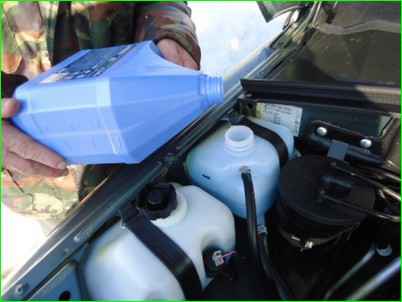
Check the coolant level.
If the coolant level is below the level, then top it up.
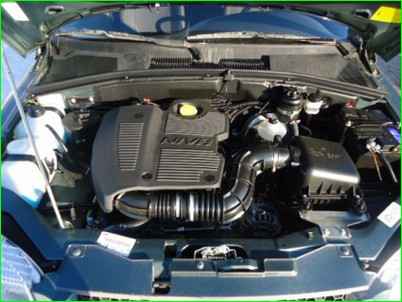
Carefully inspect the engine and underhood space.
Pay attention to leaks of gasoline, oil, brake fluid and coolant.
Make sure the wiring is intact.
Check the fit of the high-voltage wires in the ignition module sockets, on the spark plugs.
Turn on the ignition, by turning the key in the ignition switch to position “I”. This will turn on the electric fuel pump.
Without closing the hood (in case of rain or snowfall, close the hood), get behind the wheel.
Start the engine
It is better to close the hood after the engine starts running.
Before this, it is advisable to inspect the engine again, make sure there are no fuel, oil, coolant leaks, as well as extraneous sounds in its operation.
If the engine does not start, there are three main reasons:
- the starting system does not work;
- the ignition system does not work;
- the fuel system does not work.
The engine is warm or hot
The oil temperature in the engine crankcase is higher than the ambient temperature.
To start, just turn on the starter without touching the pedal accelerator.
The engine management system will automatically set the parameters of fuel supply and ignition required for starting.
If for some reason during an unsuccessful start attempt the spark plugs are "flooded", use the "purge" mode of the cylinders.
To do this, press the accelerator pedal all the way down and turn on the starter.
In this mode, there is no fuel supply and excess gasoline is removed from the cylinders by a stream of fresh air, while the spark plugs are dried. After purging, try starting again in the usual manner.
If the engine does not start, there are three main reasons:
- the starting system does not work;
- the ignition system does not work;
- the power supply system does not work.
Starting system malfunctions
Faults in the starting system manifest themselves in abnormal operation of the starter. There are five main starter malfunctions:
- 1. The starter does not turn on. The reason is a violation of contact connections, an open or short circuit in the starter switching circuits, a malfunction of the traction relay.
- 2. When the starter is turned on, multiple clicks are heard.
The reason is a faulty holding winding of the traction relay, the battery is very discharged, the contact connections in the starter circuit are loose.
3. The starter turns on, but its anchor either does not rotate or rotates slowly.
The reason is a discharged battery, faulty contact connections, burnt contacts of the traction relay, dirty collector or worn brushes, interturn or short circuit in the windings.
4. The starter turns on, its anchor rotates, but the flywheel remains stationary.
The reason is a loose fastening of the starter to the clutch housing, damage to the teeth of the flywheel or drive gear, slipping of the freewheel clutch of the drive, breakage of the lever, drive link ring or buffer spring of the starter drive.
5. The starter does not turn off after starting the engine.
The reason is a malfunction of the starter freewheel clutch, sintering of the traction relay contacts. In case of such a malfunction, stop the engine immediately!
These malfunctions require qualified intervention at a car service center or upon arrival at the garage.
You can only preliminarily check the degree of discharge of the battery using a voltmeter in the instrument cluster and the tightening of the contact connections in the starter circuit.
Checking the ignition system
Your car is equipped with a microprocessor <MPSZ> high-energy ignition system.
High-voltage wires carry voltages of about 40,000 V. Although the low current is not life-threatening, a possible electric shock when checking the ignition system can have serious consequences.
Therefore, if you touch the high-voltage wire with the ignition on, use a thick rubber glove or, as a last resort, pliers with insulated handles.
You will need: - slotted and Phillips screwdrivers, pliers with insulated handles and a tester.
Before checking the ignition system, set the gearshift lever to neutral and leave the parking brake on.
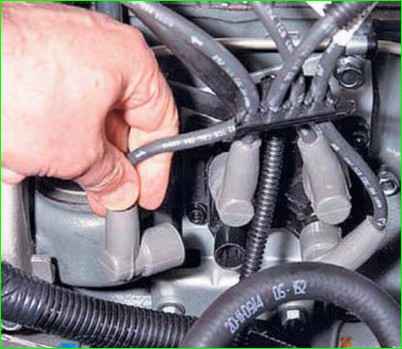
With the ignition off, check the integrity and fit of the high-voltage wires in the ignition module.
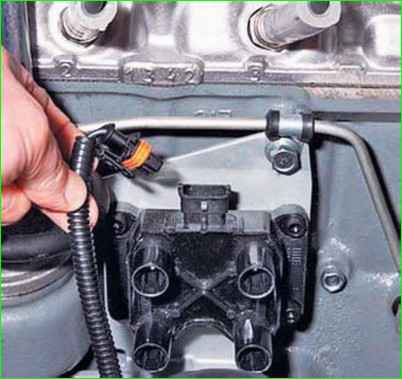
Disconnect the wiring harness connector from the low-voltage circuit connector of the ignition module and check the low-voltage circuit of the module for an open circuit with a tester turned on in the low-current (mA) measurement mode, connecting the tester probes to contacts C and B pads.
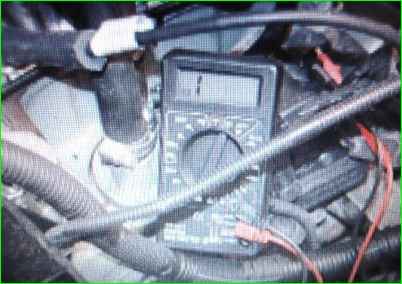
If the low-voltage circuit of the ignition module is good, check for spark at the spark plugs to check the high-voltage circuit of the module and the high-voltage wires.
Remove the high-voltage wire from any spark plug.
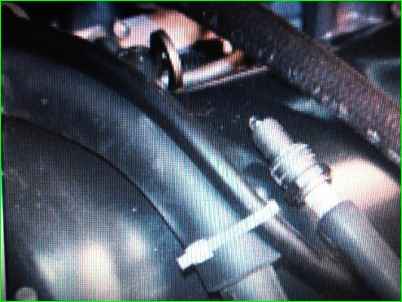
Insert a spare spark plug into the tip of the wire and press its metal part to the car's "ground".
Turn the engine crankshaft with the starter.
If there is no spark, replace the high-voltage wires with new ones.
You can first try installing non-new ones, but tested ones, "from a working car".
If there is no spark after replacing the wires, replace the ignition module.
If there is a spark, but the engine does not start, replace the spark plugs with new ones.
You can also first try installing non-new ones, but tested ones, "from a working car".
If the engine still does not start, check the engine management system for proper operation.





